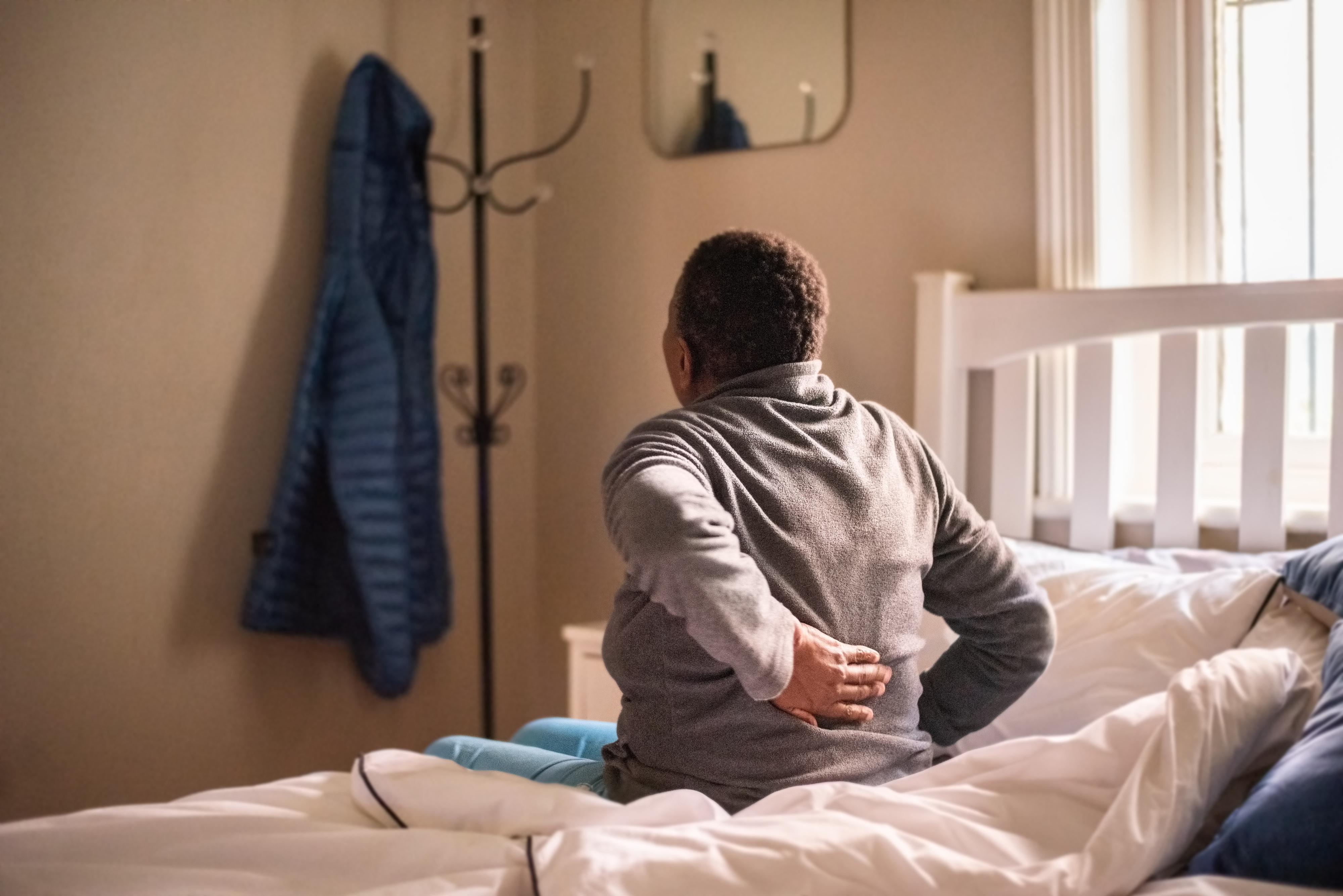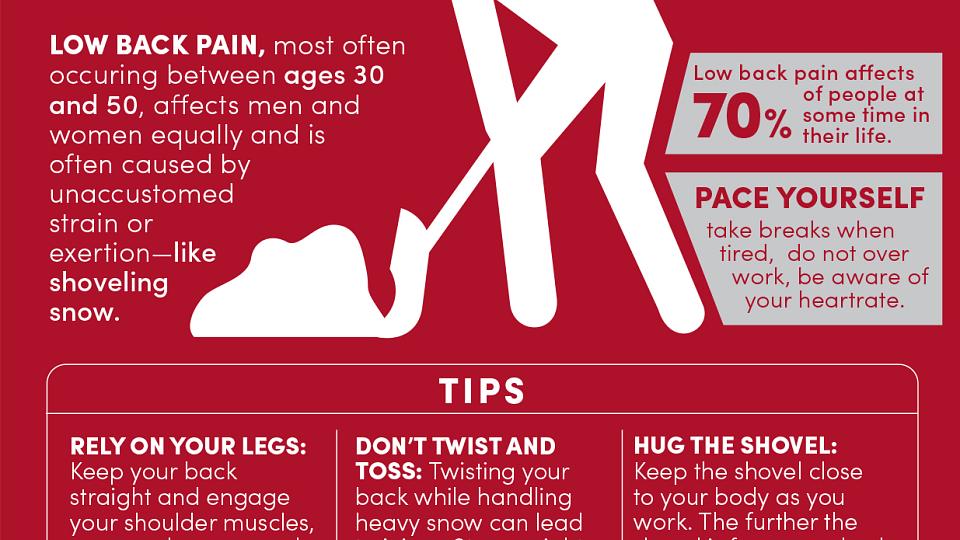
Lower Back Pain
Helping Patients Find Effective Back Pain Treatments
University of Utah Health’s Spine Care Clinic connects you to a coordinated staff of experts working together to provide nonoperative and operative care. Your lower back pain may be treated with medication, physical therapy, surgery, or other methods best suited to your specific condition. Our large team of multidisciplinary providers allows us to schedule patients quickly for visits, treatment, and surgical evaluations.
Our providers will work with you to:
- determine the cause of your pain,
- treat immediate discomfort, and
- create a plan of care to support a healthy lifestyle.


Lower Back Pain Symptoms
Your symptoms and level of pain may range from mild and manageable to severe and complex. It’s important to talk with your provider about your symptoms to create a customized care plan.
You can help your provider make an accurate diagnosis by describing the location of your pain, as well as the type of pain you experience. For example, your pain may be characterized as aching, burning, dull, electric, stabbing, sharp, etc.
The most common symptom of lower back problems is discomfort when standing, walking, or while performing everyday activities.
How Do I Know If My Back Pain Is Serious?
Signs of serious lower back pain include:
- painful leg symptoms in combination with lower back pain;
- severe or unmanageable pain that occurs while standing, sitting, or laying down; and
- sudden changes in bowel or bladder control/movements.
Risk Factors for Lower Back Pain
Most lower back pain is caused by age-related conditions, underlying disease, or a sedentary lifestyle. Talk with your spine specialist about your personal and family history of back pain to help them identify the potential causes.
Factors that may contribute to lower back pain include:
- being older in age;
- not getting enough exercise;
- pregnancy (pelvic changes and differences in weight loading on your joints could put strain on your lower back);
- weight gain;
- stress;
- family history of lower back pain;
- occupational risks, such as jobs that require heavy lifting, pushing, pulling, or twisting; and
- pre-existing mental health issues, such as anxiety and depression, which can influence how closely you focus on your pain as well as your perception of its severity.
Find a Lower Back Pain Doctor
Erica F. Bisson, MD, MPH
Neuro Spine SurgeryBrent L. Clyde, MD
Neuro Spine Surgery, Spine Evaluation
Lower Back Pain Causes
Most lower back pain is the result of normal aging or activity. Some causes of lower back pain include:
- Sprains and strains
- Spondylosis
- Intervertebral disk degeneration
- Herniated or ruptured disks
- Sciatica
- Spondylolisthesis
- Traumatic injuries
- Spinal stenosis
- Radiculopathy
- Scoliosis and other skeletal irregularities of the spine
Underlying Health Conditions
Lower back pain is rarely related to underlying health conditions, but may include:
- Abdominal aortic aneurysms (when the large blood vessel that supplies blood to the abdomen, pelvis, and legs becomes abnormally enlarged)
- Cauda equina syndrome (a serious but rare complication of a ruptured disc)
- Endometriosis (buildup of uterine tissue in places outside the uterus)
- Fibromyalgia (chronic pain syndrome involving widespread muscle pain and fatigue)
- Inflammatory joint diseases (such as arthritis)
- Kidney stones (causes sharp pain in the lower back, usually on one side)
- Osteoporosis (leads to painful fractures of the vertebrae)
- Spondylitis (inflammatory disease that can cause the small bones in your spine to fuse together)
- Tumors
Lower Back Pain Treatment
Treatment for lower back pain depends on a variety of factors and personal preferences. Your doctor will work with you to coordinate a plan of care best suited for your needs.
We typically begin treatment with more conservative methods, such as:
- pain medication targeting your specific type of pain;
- hot or cold packs to help ease pain, reduce inflammation, and increase mobility;
- moderate daily activity to improve flexibility and muscle strength; and
- physical therapy to strengthen the core and supportive muscles, improve mobility, and promote proper posture.
Injection & Nerve Therapies
- Local injections—Your doctor may recommend easing joint or nerve pain with targeted doses of local anesthetic and/or steroid medication.
- Nerve root blocks—This technique uses X-ray guidance to inject medication into the nerves near your spine. We typically recommend a nerve root block for patients who experience leg or arm pain in addition to their back pain. This procedure can also be used to help pinpoint the cause of your pain, or as a trial to determine if other advanced treatments (such as surgery on the affected nerve) may help alleviate symptoms.
- Nerve ablation/denervation—This technique uses targeted heat to destroy nerves that carry pain signals. This in-office procedure takes 45-60 minutes to perform. You will typically be given an oral sedative prior to the procedure. You will be able to return to your regular activities a few days after your procedure.
- Electrical nerve stimulation—This may be recommended if other less invasive treatment options have not been effective. A series of electrodes (medically-safe electricity conductors) and a battery-operated pulse generator are implanted under your skin to deliver electronic pulses to the affected nerves. These electronic pulses interfere with the nerve impulses that make you feel pain. If you and your doctor determine spinal cord stimulation is the best way to treat your pain, you will undergo a trial procedure before a permanent implant takes place. Both procedures are outpatient, meaning you will return home the same day. The procedures may take one to two hours. Most patients return to regular activity within a few weeks.
Surgery
Spine surgery may be an option to treat your lower back pain if other treatments are not effective. Many lower back conditions are resolved without surgery. However, you may be considered for a surgical evaluation if you experience the following symptoms in addition to lower back pain:
- numbness, tingling, or radiating pain in your arms or legs;
- trouble walking; and
- bowel or bladder changes unrelated to normal aging.
If you experience severe back pain that causes the inability to stand, sit, or bear weight, you should be evaluated by a spine specialist as it may be a sign of an underlying fracture or spinal instability.
What to Expect at Your Appointment
Front Desk Check-In
You should arrive 15 minutes ahead of your appointment time to complete any necessary paperwork we need. This helps us dedicate as much time as possible to your visit. Please bring your insurance card and make sure our clinic has access to medical records or medical imaging done outside U of U Health. Our team will verify your medical coverage through your insurance provider.
During Your Visit
Depending on your symptoms, you may see a physical therapist, physical medicine and rehabilitation physician (physiatrist), or a surgeon.
Your provider will take an in-depth evaluation of your symptoms and level of pain. Discuss your personal and family history of back pain with your provider to help them identify and isolate causes. Your provider will conduct a physical examination to evaluate your condition and assess your pain, such as testing your sensation, strength, stability, and coordination. You and your provider will go over any available medical imaging and discuss your treatment options.
Diagnosis
Before or after your visit, your physician may recommend imaging such as an MRI, CT scan, or X-ray. Based on your needs and severity of pain, your provider may also prescribe physical therapy, over-the-counter pain medication, and other conservative pain management techniques before requesting further diagnostic tests and/or imaging.
Your specialist will provide information regarding your diagnosis and answer any questions you have. If surgery is recommended, we will discuss the risks of surgery, expectations for the day of surgery, and any possible treatment alternatives.
At the end of the appointment, you will have a plan of action in place for your treatment and care.
Schedule an Evaluation
If you are worried about your lower back pain and treatments at home aren’t working, you can schedule an evaluation with one of our spine specialists.







